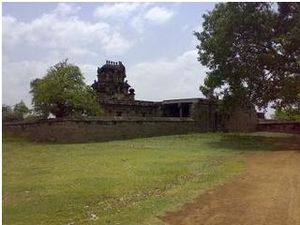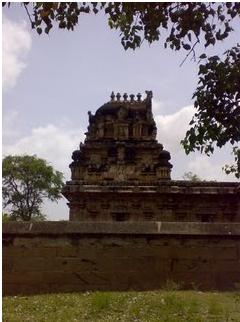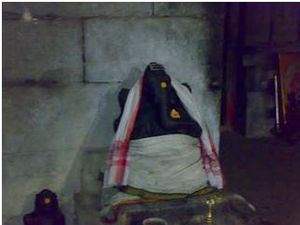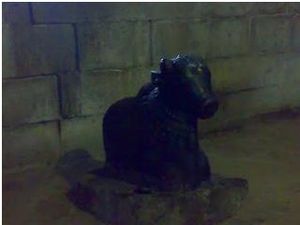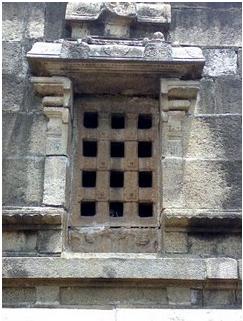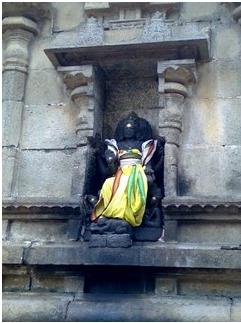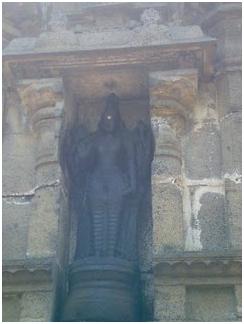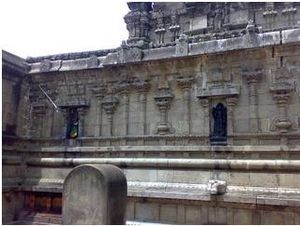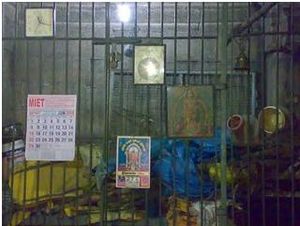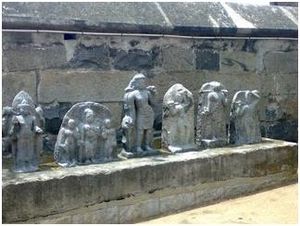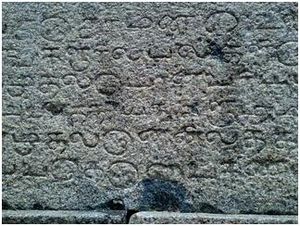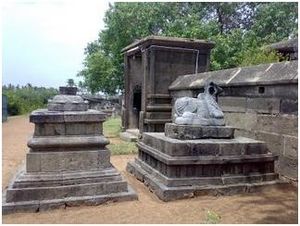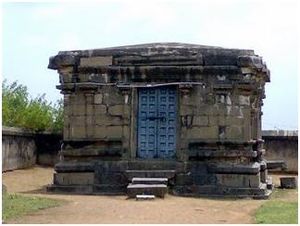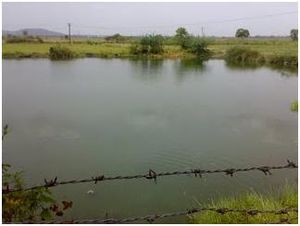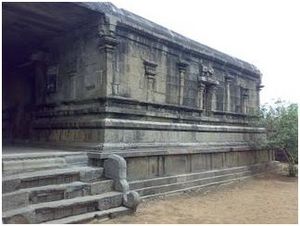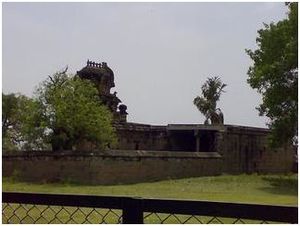Manimangalam Sri Dharmeswarar
Manimangalam village is located about 10 kms from Tambaram on the western side of Mudichur Road leading towards Padappai.
This village has a very high historic importance because of the huge battle fought here between Narasimhavarma Pallava and the Chalukya King Pulikesi II. This battle was fought in Manimangalam during 7th Century AD.
Manimangalam has an ancient temple for Lord Shiva called Sri Dharmeswarar. The Goddess here is Sri Vedhaambigai. According to the inscriptions, this temple is said to have got constructed by Chozhas. This temple has mentions in the inscriptions as Grama Sikhamani Chathurvedhi Mangalam, belonging to Kunrathur Naadu, a division of Puliyur Kottam in the district of Jayamkonda Chozha Mandalam.
In ancient days, the lands along with temple were donated by the kings to the Vedic scholars for performing Vedic rituals for the well being of the country. Such villages were called as Chathurvedhi Mangalams. Manimangalam is one such village and was called as Grama Sikhamani Chathurvedhi Mangalam.
The temple is built on a very vast space amidst greenish paddy fields. A beautiful Peepul tree welcomes you as you enter the gates of the temple. This temple is maintained by Archeological Society of India and protected properly. The looks and the structure itself show the antiquity of the temple.
There is a small Mandapam outside the sanctum. Sri Vinayagar and Sri Subramanyar are seen on either sides of the entrance of the sanctum. The main deity, Sri Dharmeswarar is seen facing east. One can feel the divinity in this calm and cool ambience with the view of the Lord in natural light and the light from the temple lamps.
There is a small Nandhi facing the Lord in the sanctum, from this Mandapam.
There’s another small gated portion facing south, which is empty. There had been a beautiful Sri Natarajar here in ancient days and some miscreants had stolen the deity. While local people chased them, it is said that the miscreants had thrown Sri Natarajar in the nearby pond and ran off, in which Sri Natarajar’s idol was damaged.
In the inner praakaaram, Sri Vinayagar is found at the South western corner, under a tree in good shadow.
Along the walls of the praakaaram, Sri Vinayagar and Sri Dhakshinamurthy are seen facing South.
Lord Sri Mahavishnu is facing the west from the walls of the praakaaram.
Lord Sri Brahma, Sri Sandigeswarar and Sri Durgai are seen on the Northern side of the praakaaram.
A window, beautifully carved window with 12 openings is found on the eastern side wall of the praakaaram.
The Vimaanam is built of Gajabrishta shape called Thoonganai Maadam (தூங்கானை மாடம்) in Thamizh.
The whole temple is built on stone with wonderful architecture. Even the steps to reach the Mandapam outside the sanctum is done beautifully, but damaged in few places.
There are many dilapidated idols of Parivaara moorthies and Shiva Lingam kept safely in the inner praakaaram.
One can notice many inscriptions along the walls of the temple.
There is a Bali Peetam and another big Nandhi found at the outer praakaaram facing the sanctum. There is a wall obstructing Nandhi from viewing the sanctum, but for a small opening in it.
There is a separate shrine for Goddess Vedhaambigai at the outer praakaaram, facing south. Goddess is beautifully dressed and is so gracefully in blessing posture like a Mother blessing her children.
The temple pond is found adjacent to the temple, without any steps or bathing Ghats to it.
Festivals like Maha Shivarathri, Pradhosham, and Karthigai Dheepam are celebrated well in this temple, with much effort of the priests. People from various parts of the city visit this temple very often but unfortunately, not the local villagers.
Another rarity of Manimangalam is one can find many Vinayagar temples in this village, be it small or big. And all the Vinayagars have elephant as their Vaahana (Carrier) and not the Mooshikha (mouse).
Manimangalam also has another ancient temple for Lord Shiva called Sri Kailaasanathar, which again is an ancient one and needs attention

